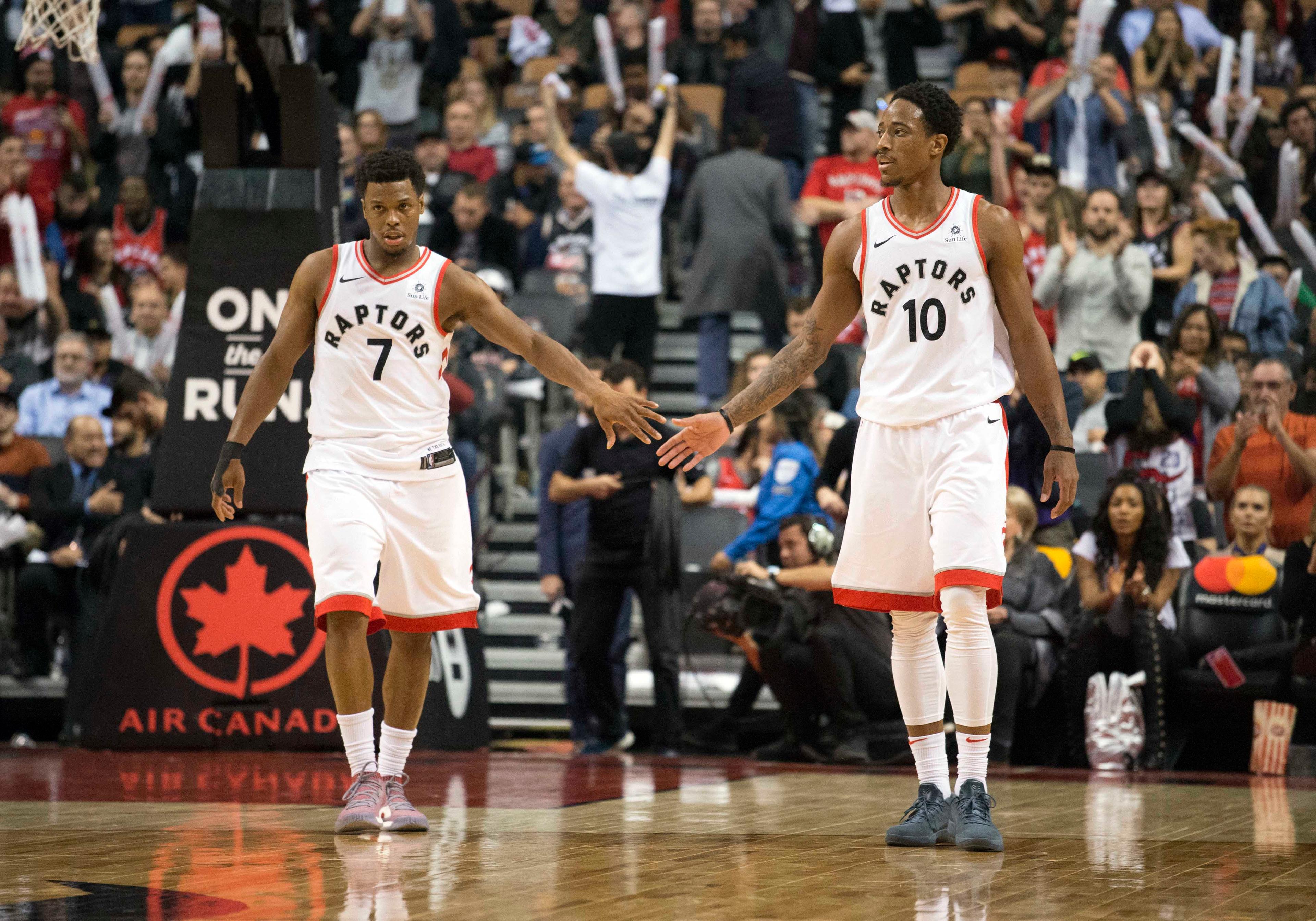
Are we cognizant of NBA biases that go beyond loving one team and irrationally hating another? Or, like our good pal Kyrie Irving says, “If you’re very much woke, there’s no such thing as distractions.” Have latent, longstanding opinions distracted us from the reality of some leaguewide truths?
Why is 17–7 Toronto kept out of “escaping the East” conversations?
Because the Raptors are the Clippers of the Eastern Conference.
Before you hit send on some (kindly and passively worded) emails, Canada, I admit there is a flaw in that comparison. In reaching the 2016 Eastern Conference finals, Toronto proved it could at least reach the penultimate stage of the playoffs, something the Clippers were never able to do. But, otherwise, the parallel holds: Before Chris Paul’s trade to Houston, L.A. had kept the same gang of stars together, year after year, and enjoyed regular-season success just for the team to unravel come playoff time. Eventually, the Clippers were no longer regarded as realistic contenders to reach the Finals when the Western Conference squads around them became superior teams. Doc Rivers had a talented cast in the Chris Paul era, but we knew years ago that it would never be enough.
The Raptors doubled down on their core this offseason, just like the Clippers had in years past. Kyle Lowry re-signed, locking in the Lowry–DeMar DeRozan backcourt that has been with the team since 2012, as did Serge Ibaka. Boston is better. Cleveland has LeBron. Milwaukee is growing up. Washington is gaining experience. This Toronto lineup wasn’t good enough to win it all in the past. Why would it be good enough now?
Yet here are the 2017–18 Raptors, sitting in second place in the East and looking like a 2011 MacBook with a new graphics card. Dwane Casey’s newfound focus on ball movement breeds open looks and a more efficient offense. When Lowry struggled to adjust to the new, egalitarian system, I explored why it would help Toronto, which lives and dies (mostly dies) by his streaky shooting performances in the playoffs, in the long run.
And yes, a long run could be just where they’re headed.
Why do we think of Anthony Davis as more “injury-prone” than Kawhi Leonard?
Especially when, as Reddit user r/brianscalabrainey pointed out, Kawhi has averaged fewer games per season over the course his career? The Spurs are 19–8 without Kawhi, who has been sidelined since the beginning of the season with a quadriceps injury. He is expected to return Tuesday.
Our perception of Davis’s fragility has both to do with how dependent New Orleans’s success is on his body — the franchise may have not equipped the roster with supplements capable of reaching the playoffs with Davis, but it was certain failure with him sidelined — and how it played into his limited national spotlight.
Left-knee injuries have prematurely ended two seasons for Davis, and this is where the injury blows from the Brow and the Claw — the world’s lamest-sounding superhero conceit since Ant-Man — differ. Before last season, Kawhi had been available for every Spurs playoff game during his NBA career. He’s won a ring and a Finals MVP award. During Davis’s time, the Pelicans have reached the playoffs only once, in 2015. AD, like Kawhi, was available for every game, but the team’s run didn’t last long. New Orleans was swept by Golden State.
Last week, my colleague Chris Almeida wrote that “Davis has never played professionally for a contending team. And given that his off-court extracurriculars rarely reach viral status … he hasn’t become central to the league’s narrative.” Kawhi has a competitive identity that goes beyond time spent on the team physician’s table. So far, injuries are what have given Davis the most national headlines.
The Pelicans could not get to the postseason without Davis, who, aside from a groin-injury scare, is currently healthy. Missing Kawhi, one of the best players in the league, hasn’t stopped San Antonio from floating to the top of the Western Conference.
Why don’t we shower Damian Lillard with the same affection as [enter Western Conference point guard here]?
Well, not “we,” The Ringer, who voted him 15th in our ranking of the Top 25 NBA Players of the First 25(-ish) Games. (Full disclosure: My ballot ranked him even higher.)
Calling out the underappreciation of Damian Lillard is a grassroots concept started by Damian Lillard. For years, Lillard was an All-Star snub, evoking feelings so strong that they inspired his Instagram captions and rap songs (his, Damian Lillard’s, rap songs). Dame was last voted onto an All-Star roster in 2014, a time too long ago for even the elderly among us to remember, back when coaches got to choose some of the players.
Outside of one weekend in February, the extent to which Lillard is snubbed isn’t so definable. The rest of the time, it’s a soft, seven-spots-lower-than-he-should-be-in-your-Twitter-rankings-that-no-one-asked-for snub. In the words of Chris Ryan, Lillard “puts up top-15 player numbers, but we talk about him like he’s Reggie Jackson.”
James Harden scored 48 points against the Blazers on Saturday. Lillard tied a franchise record with nine 3-pointers in the same game. LeBron James has the most 30-plus-point games this season (12). Lillard has 10. He’s averaging more points per game than Kevin Durant, Russell Westbrook, and Kyrie Irving. He’s seventh overall in win shares, and of all point guards in the West only Harden and Steph Curry tout a better PER. It matters less where you slot Lillard among these players, though, and more that you remember to put him there at all. Open your eyes, your hearts, your rankings.